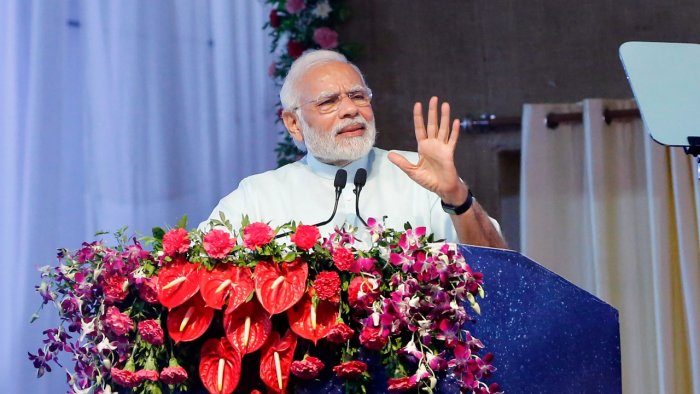GG News Bureau
New Delhi, 10th June. Prime Minister Narendra Modi on Friday shared initiatives about how, in the last 8 years, use of technology and innovation have transformed every sector of the economy for the better.
PM Modi tweeted, “Technology means greater transparency.Technology means enhanced ‘Ease of Living.’ The numerous strides in technology in the last 8 years will make you glad. #8YearsOfTechPoweredIndia”
“India is leading the way in using technology and innovations for governance and serving the poor. In the last 8 years we have transformed every sector of the economy for the better.
Some of the major reforms and interventions of 8 years of Tech Powered India
The success of India’s digital payments ecosystem is world renowned as India sits at the number one spot in digital payments. This revolution was a part of the larger success of the Digital India movement spawned by Prime Minister Narendra Modi. While Digital India includes digital payments, there are a number of elements in it that have been massively successful in their own right.
Rise of connectivity and fall of costs
In the last eight years, there has been a meteoric rise in mobile ownership across India. The sharp decline in the cost of data has led to the deep penetration of the internet, bridging the urban-rural divide.
As of March 2014, the number of internet connections in India was 25.15 crore and the number of broadband connections was 6.1 crore. By June 2021, the internet connections grew by 231% (83.37 crore) and broadband connections by 1,200% (79 crore).
This was followed by a decline in data costs and a sharp increase in data consumption.
The cost per GB of data was Rs. 308 in 2014 and fell to Rs. 9.53 by 2022, while the rise in average monthly data consumption per wireless data subscriber was a whopping 22,605% – from 61.66 MB in March 2014 to 14 GB in June 2021.
This rapid expansion of connectivity is being taken deeper into India’s society by the Modi government’s initiative to connect villages with optic fiber connectivity. About 5.67 lakh km of fiber has been laid and over 1.77 lakh Gram Panchayats have been connected, an effort towards ending the digital divide.
Digital for delivery
The Jan Dhan – Aadhar – Mobile Trinity or JAM Trinity has heralded a revolution in public service delivery in India. Jan Dhan’s 45 crore bank accounts have given the government the ability to reach the poorest of the poor at the click of a button, while Aadhar helps provide authentication and mobile helps the poor access services easily. This made Direct Benefit Transfer possible on a large scale and today, over Rs. 22 lakh crore has been transferred directly into the accounts of beneficiaries, saving over Rs. 2.22 lakh crore in avoided leakages. From PMAY to PM-KISAN, the benefit of multiple schemes reach the poor directly.
Multiple digital initiatives are making interactions with the government easier for the people.
- For example, DigiLocker app has removed the need to carry documents physically. Over 5 billion document issues have happened through this platform.
- The UMANG App brings multiple government departments and their services on one platform.
- The way the CoWIN App ensured equitable vaccine access to a population of 135 crore Indians is a story in itself.
- Scholarships, pensions and many other such benefits are now available for online registration, verification and disbursal.
Tech for transparency
Technology adoption by the government over the last eight years has ensured a remarkable increase in transparency in governance. Today, all government programmes have a digital dashboard that provides all details of beneficiaries. These dashboards have enabled citizens to hold the government accountable and improved public service delivery.
Digital delivery of public services is eliminating corruption and promoting ease of living. From Direct Benefits Transfer to faceless tax assessments, reducing discretion is eliminating rent seeking tendencies in the officialdom and empowering citizens. Technology has also made governance in India more efficient and effective. From the adoption of biometric authentication to the creation of digital single-window approval systems, governance is undergoing a paradigm shift in India.
Even public procurement, an erstwhile common avenue for bureaucratic corruption, has now become digital as the Government e-Marketplace (GeM) portal is being utilized by government departments and PSUs for their procurement. The portal is successfully eliminating corruption and streamlining public procurement in the country.

